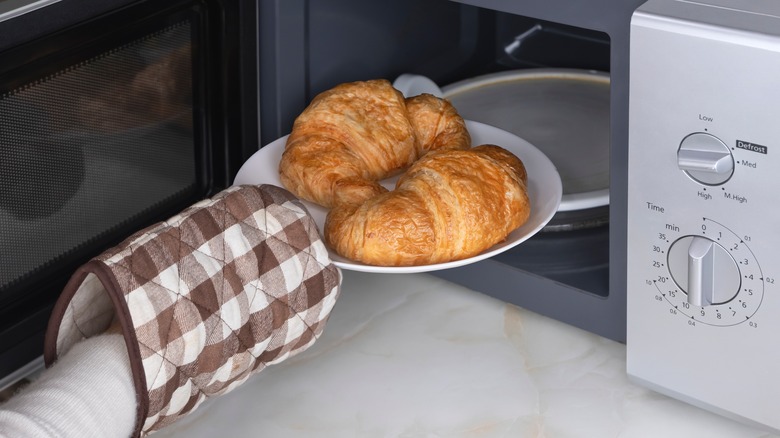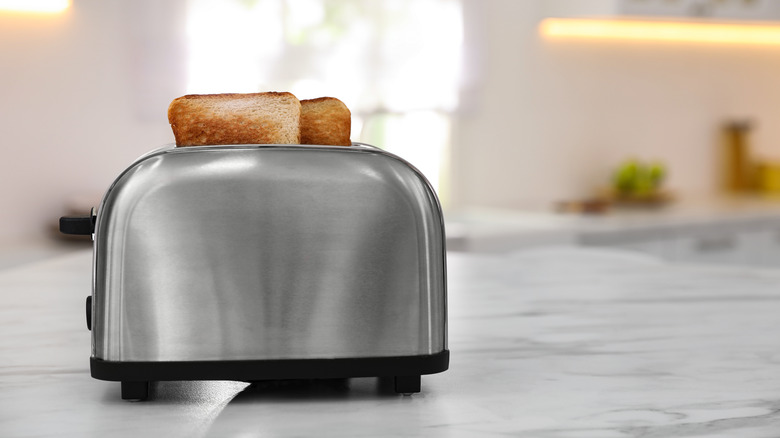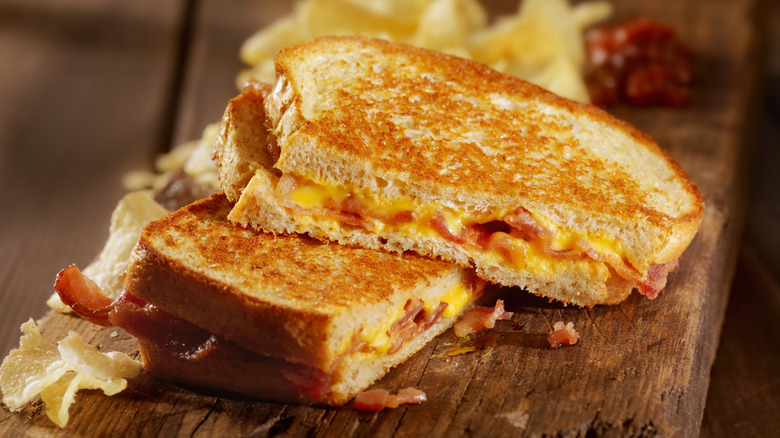Why Bread Gets Rubbery In The Microwave, But Not The Toaster
Reheating bread is one of the great challenges for the modern home cook. Whether you're a pizza prosthelytizer trying to reheat a New York slice, a hoagie fanatic aiming to revive your favorite sandwich, or a diehard pork and pickles lover in the mood for the second half of a melty Cuban sandwich, you're familiar with the struggle. You could pop it in the microwave, but you're aware that your bread will only give the illusion of softness before solidifying into a rubbery, chewy mass. (And if it's a sandwich, your fillings might still come out cold while your bread is doling out steam burns.)
But why does the microwave, such an integral part of the fast-paced diner's life, do us so dirty when it comes to bread? It all boils down to the natural sugars found in flour. Flour, milled from wheat, contains gluten (a type of protein) and sugars (which form starch when their molecules are chained together). When these sugars are heated, they melt and then quickly recrystallize, resulting in an undesirable chewy texture.
How microwaves and toasters work
When bread is reheated in the microwave, it undergoes a different chemical process compared to when it is warmed up in a toaster or oven. Microwaves work by bouncing electromagnetic waves around and through your food, particularly targeting water, sugar, and fat. This process spreads heat throughout the food, causing sugars to re-gelatinize, and water to turn into steam. Once your bread has been microwaved, the steam evaporates and the sugars harden, producing a loaf that is dry and tough.
On the other hand, toasters are powered by infrared radiation, which is less selective than microwave radiation, and doesn't specifically target certain components in your food. Infrared radiation heats the food item evenly from the outside in, crisping the bread's exterior. There is no steaming or re-gelatinization involved, only direct, dry heat. As such, toasters are effective at reheating bread so that it remains soft on the inside without becoming soggy or overly hard.
When using a toaster isn't an option
Unfortunately, not all bread is suitable for reheating in a toaster. Occasionally, toasters may extract too much moisture from already-dry bread, causing it to become stiff. They also might not be ideal for reheating sandwiches where the bread is laden with oils and sauces. If you don't have a toaster oven, which can be handy in these situations, there's another effective method to consider.
One of the best ways to reheat bread is to griddle it on a pan with butter. Simply cut your dinner rolls in half, or if it's a sandwich, remove the contents and lay the bread flat on the pan (this method works better with thinner slices). Then, let your bread cook in butter over medium-high heat until it turns golden brown. This method will produce a crispy, salty crust and heat the bread through, making the inside soft. You can also use a dry pan, but you won't achieve the same buttery finish.



